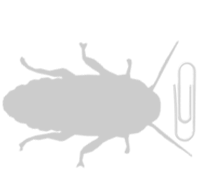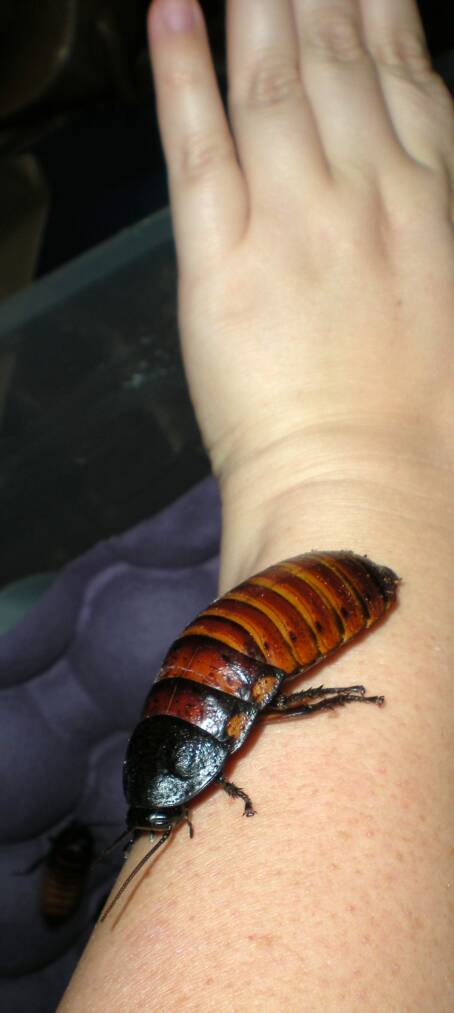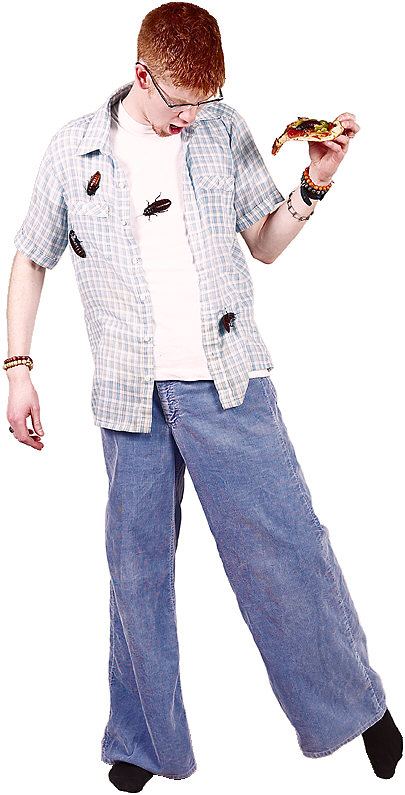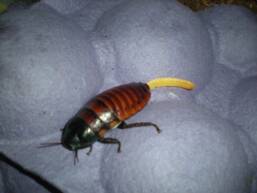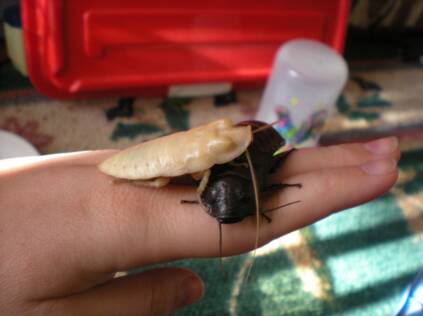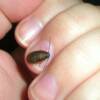




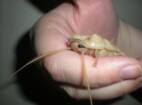
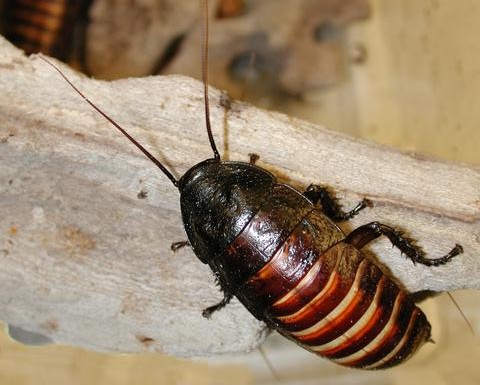
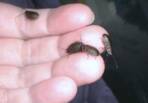
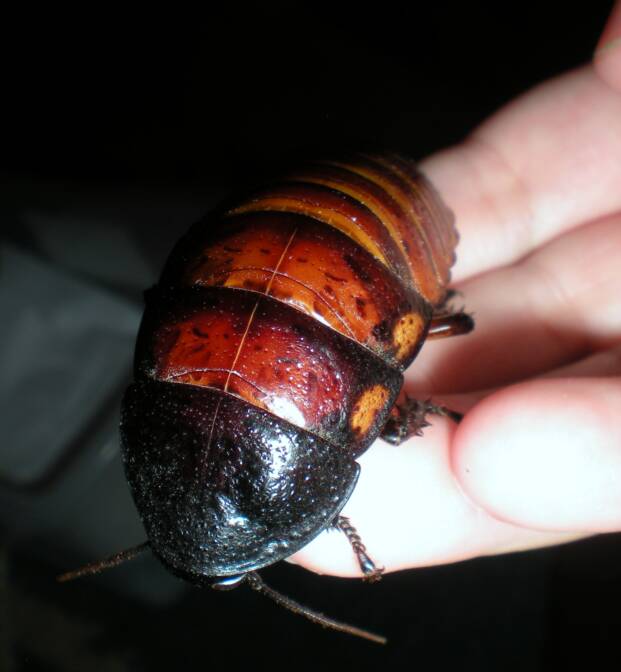
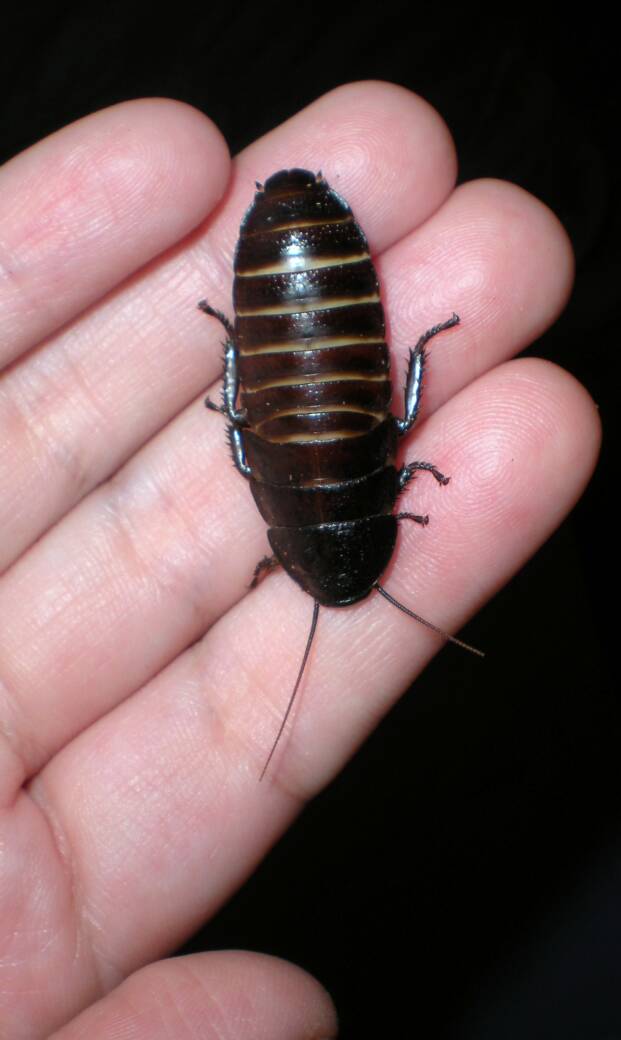

Depending on what age you purchase your Madagascar Hissing Cockroaches or if you intend to breed Hissers you will see various milestones! Birth of nymphs, molting, and breeding are all fascinating to watch, but whether or not your Hissers are going to go through it you can witness a lot of it here!
Breeding: How Do You Do it and Do You WANT to?
Breeding Madagascar Hissing Cockroaches is not difficult. All that is needed is a male and a female (or a couple of females) and to keep the cage warm (80-85 F).
The next question is do you want to breed? Release of non-native animals, like Madagascar Hissing Cockroaches is ILLEGAL, you you must have a responsible way of dealing with all the babies... and there are MANY! Gestation is usually about 60-70 days. Normally, a female gives birth to 30-60 babies! That is a lot of baby Hissers if you don't have a plan!
Your options are...
1. Keep them. This will only work for awhile, even with a large cage, as you will eventually be overrun with children, grandchildren, and great grandchildren of your original pets!
2. Sell/Rehome them. This can be difficult as finding homes for Hissers often involves placing classified ads and a lot of waiting for customers! However, if you live in an area where Hissers are not sold, this may be an option for you.
3. Use them as feeders for other pets.
Madagascar Hissing Cockroaches make
nutritious feeder insects for pets such
as sugar gliders, hedgehogs, tarantulas,
and carniverous lizards. These are best
fed when young or recently molted due
to the hard chitin shells. Ingestion of
these hard indigestible shells can cause
intestinal impaction, and should be
avoided.
4. Disposing of Humanely, such as
freezing in the freezer in a plastic bag.
Ugh. This is the last case option.
While I support the "circle of life" and
do use some of my roaches to feed
other animals, I do not agree with killing
for no reason. If you find yourself with an accidental litter, I would prefer you contact me and I will either raise them and rehome them, or possibly, use them to feed another animal.
If none of these options appeals you you I reccomend NOT breeding (just get boys or very young girls). You can still experience many cool milestones via this website.
BIRTH
days. Normally, a female gives birth to 30-60
babies, known as nymphs, over a two-day
period. Each nymph is about 1/4-inch long (about
the size and shape of a small watermelon seed,
which is what I sometimes call them. "My Little
Melon Seeds!"). The young may remain grouped
around their mother for awhile after emerging as she protects them by raising her body over them (Cornwell 1968).

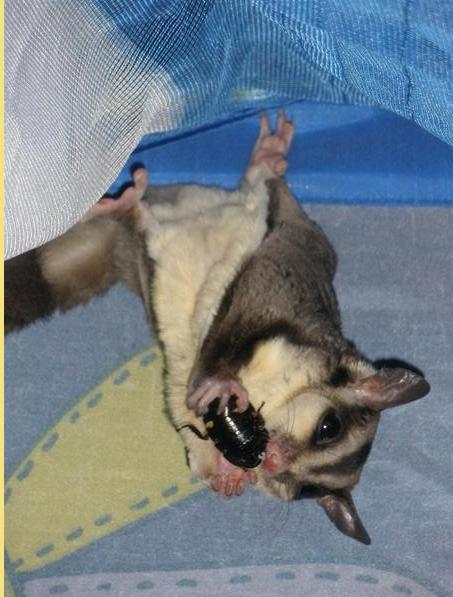

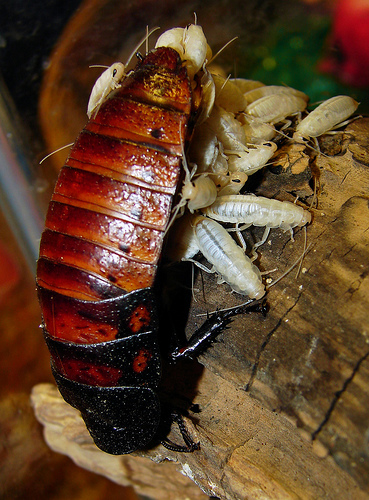
Molting
The nymphs, which resemble miniature adults, grow fairly rapidly. They usually go through six molts, reaching adult size in the seventh. (It is only after this that you may choose to "Bedazzle" your Hisser as is popular. For more information, please check this out!)
The young Hisser needs to molt (shed its exoskeleton) as it gets larger, since its hard, outside covering does not expand very much to accommodate the growing insect. Grasshoppers, praying mantises, and termites, which are close relatives of the roaches, develop in the same way.
Want to watch?!
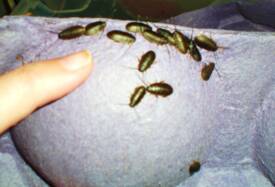
When a nymph is about to molt, you see a crack in the lengthwise line on the back of the insect. The exoskeleton has split and a white, black-eyed, larger-sized roach emerges. Within a day, the color darkens as the new exoskeleton hardens. The newly emerged cockroach usually recycles nutrients by eating the shed exoskeleton. Yuck (but cool, right?!)
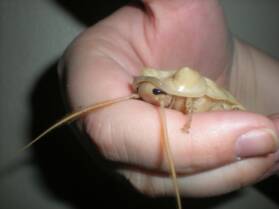
Nymphs reach maturity in five to ten months, with faster maturation at higher temperatures. Adults may live for two to three years, though some prickly pampered pets live as many as 5!
